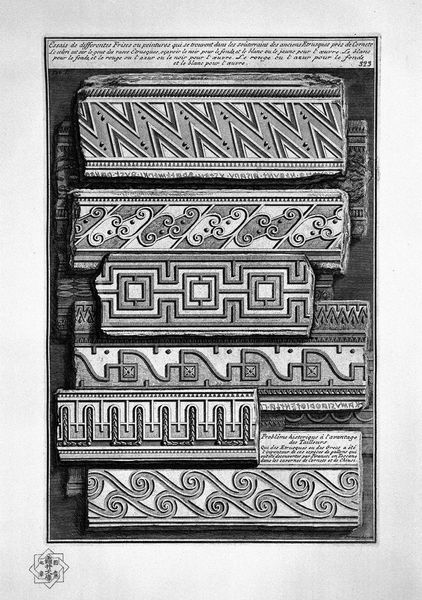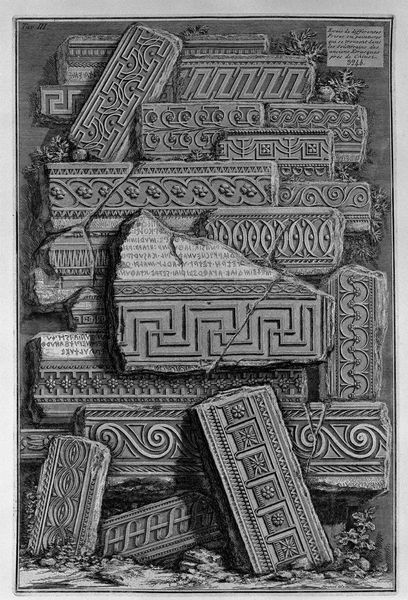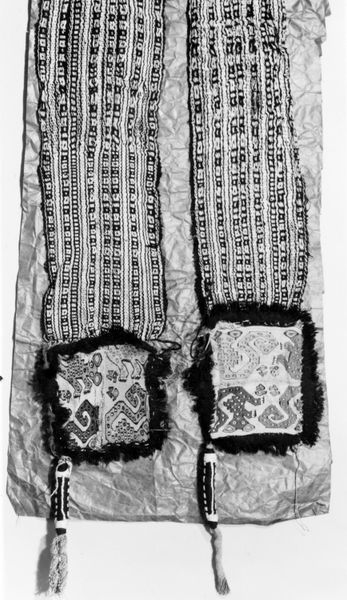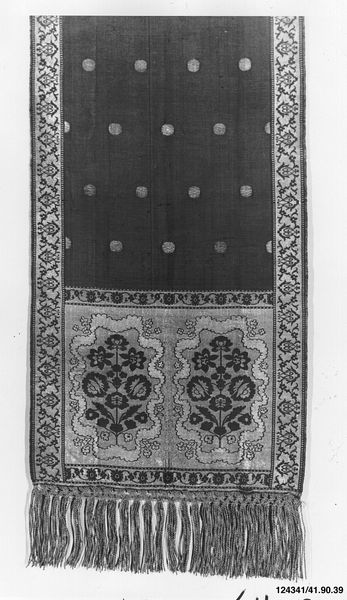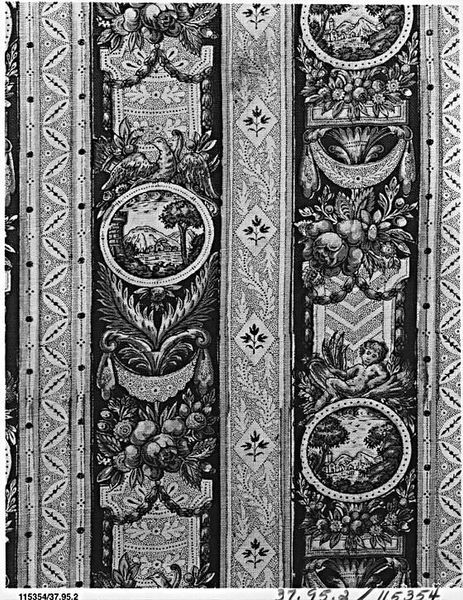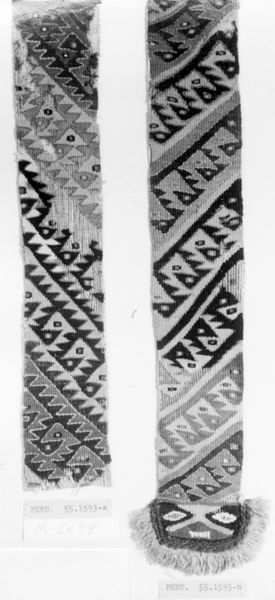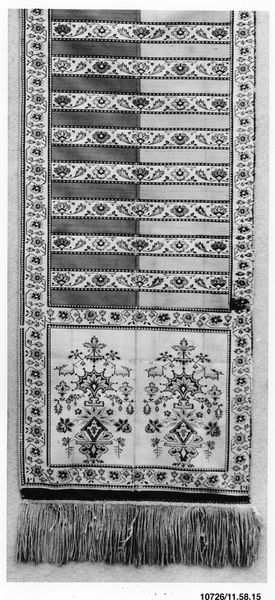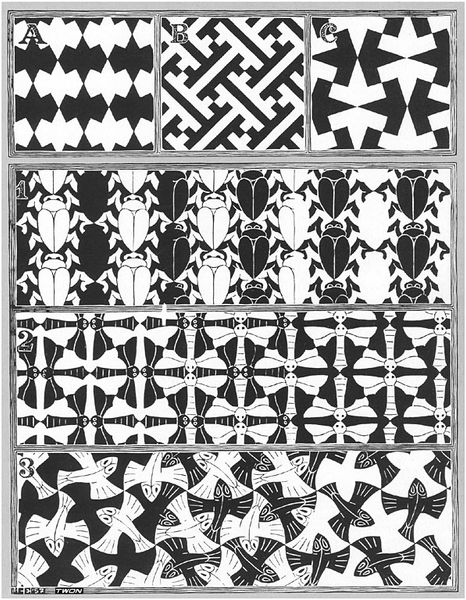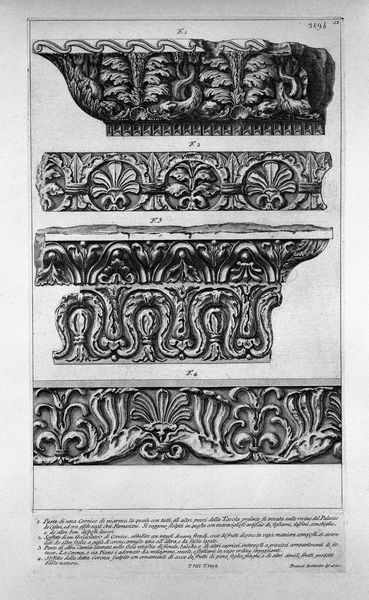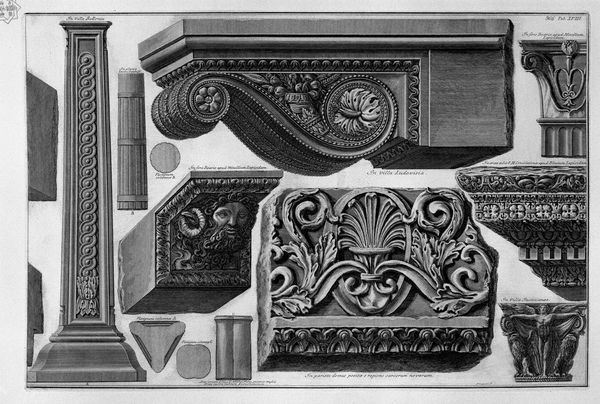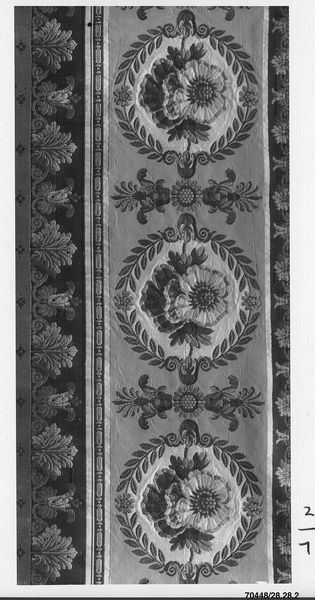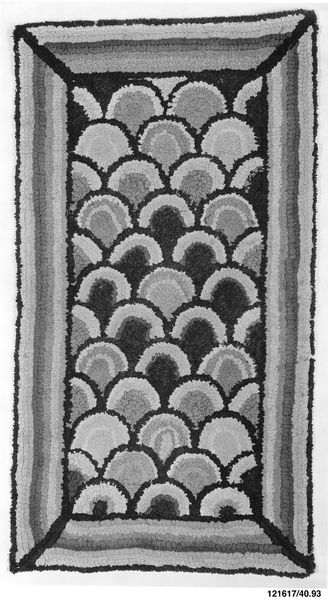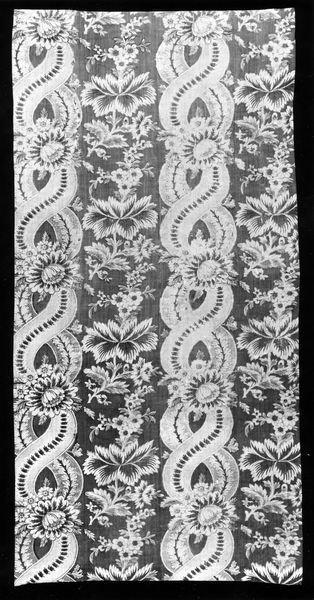
drawing, print, etching, engraving
#
drawing
#
natural stone pattern
# print
#
tactile
#
etching
#
sculpture
#
detailed texture
#
sculptural image
#
geometric
#
ancient-mediterranean
#
embossed
#
carved
#
detailed
#
line
#
history-painting
#
engraving
#
statue
#
moulded
Copyright: Public domain
Curator: Look at the details here. What first grabs your attention? Editor: The textures! Even in this engraving, you can feel the carved stone, right? It makes me want to run my hands across it. Like some ancient, tactile puzzle. Curator: Precisely! This is a print titled "Friezes of Etruscan tombs of Tarquinia." Giovanni Battista Piranesi captured these details, these echoes from a civilization that predates even the Romans. Editor: Etruscan! Instantly, I think about power dynamics, how their culture was absorbed and overshadowed. Did Piranesi think about that when making this? Was it just about aesthetics for him, or did he engage with the stories these friezes held? Curator: A bit of both, I suspect. Piranesi was fascinated by Roman grandeur, of course. But he also had a romantic's eye for ruins. Look at the patterns, these repeating motifs: spirals, geometric nets, stylized waves. They hint at rituals, beliefs, a whole symbolic world we can only glimpse now. Editor: And the geometric precision alongside the more organic shapes, the leaf-like forms. This balance is so striking! Also, the texts that appear within some of the friezes, did Piranesi record these literally? They must give vital context. Curator: The inscriptions are somewhat fragmented. Imagine what those tombs must have looked like originally – painted in vibrant colors, these friezes narrating stories, protecting the deceased. Now, it is an attempt to bring back to life ancient societies. Editor: Exactly, an act of cultural preservation or…appropiation. It reminds us that history isn’t a straight line; it's a conversation we're constantly having with the past, trying to decipher its language, acknowledge both beauty and power. Curator: Piranesi leaves us a map of possibilities, even in these static lines. A chance to feel the echoes, connect with something ancient. Editor: And question who gets to tell the story, and from what perspective. A responsibility and an honor, I think.
Comments
No comments
Be the first to comment and join the conversation on the ultimate creative platform.
